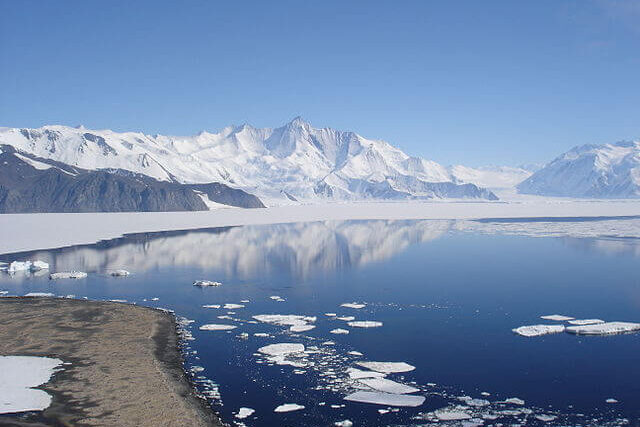
Antarctic wildlife’s exposure to the Sun’s damaging rays has increased in recent years, scientists say.
This has been due to an extended presence of the ozone hole above the frozen continent – a phenomenon exacerbated by factors such as the unprecedented Australian wildfires fuelled by climate change.
Published in the journal of Global Change Biology, the research underscores the impact of ozone depletion on Antarctic ecosystems.
University of Wollongong climate change biologist Prof Sharon Robinson said: “When I tell people I work on the ozone hole, they go: ‘oh, isn’t that better now?'”
Scientists first detected the ozone hole in 1985 while monitoring solar radiation reaching Earth. This depletion, primarily caused by ozone-depleting chemicals like chlorofluorocarbons (CFCs), led to the landmark Montreal Protocol of 1987, a globally recognised agreement hailed as one of the most successful environmental treaties.
“But there’s a hole – an area where the ozone layer is very depleted – that appears every spring over Antarctica,” Prof Robinson, who is deputy director of the university’s Securing Antarctica’s Environmental Future research centre, explained.
Despite significant progress in healing the ozone layer, the persistent ozone hole poses a unique threat to Antarctica. Chemical reactions occurring in frigid, high-altitude clouds lead to ozone breakdown, creating the hole.
While the hole traditionally peaks in September and October, coinciding with periods when land-based plants and animals are shielded by snow cover and marine life is safeguarded by extensive sea ice, its presence now extends into December, deep into the Antarctic summer.
“That’s when things will be exposed and most vulnerable,” said Prof Robinson.
The repercussions of increased ultraviolet (UV) radiation, particularly UV-B rays, remain uncertain for Antarctic mammals and birds. However, it’s speculated that creatures adorned with fur and feathers, such as seals and penguins, enjoy some protection.
“But probably the biggest risk to the Antarctic animals is eye damage.”
Research findings suggest that Antarctic mosses produce their own protective compounds against UV radiation, while krill, vital marine organisms at the base of the Antarctic food chain, migrate deeper into the ocean to evade UV exposure, potentially disrupting the food supply for whales, seals, penguins, and seabirds.
“And if they’re putting energy into sunscreen, they’re putting less energy into growing,” said Prof Robinson. “There’s always a cost to sun protection.”
“We also know that the phytoplankton that the krill feed on will have to make sunscreens in order to avoid damage, said Prof Robinson.
The persistence of the ozone hole, exacerbated by events like the extensive Australian bushfires of 2019 and 2020, serves as a stark reminder of the ongoing environmental challenges.
Professor Jim Haywood of the University of Exeter emphasises the urgent need for action, considering the record duration of the Antarctic ozone hole in recent years.
“Society cannot be complacent about our achievements in tackling it,” he said.
Various factors, including wildfires and volcanic eruptions, continue to impede ozone recovery by releasing particles that sustain ozone-depleting reactions.
Furthermore, proposals for geoengineering, such as cloud-seeding experiments involving the release of particles into the upper atmosphere, highlight the complexity of mitigating ozone depletion and its broader environmental implications.
“That would also deplete ozone, so it’s a bad idea,” she said.
“The biggest thing we can do to help Antarctica is to act on climate change – reduce carbon emissions as quickly as possible so we have fewer bushfires and don’t put additional pressure on ozone layer recovery.”
——————————————————————————
At Natural World Fund, we are passionate about stopping the decline in our wildlife.
The decline in our wildlife is shocking and frightening. Without much more support, many of the animals we know and love will continue in their decline towards extinction.
When you help to restore a patch of degraded land through rewilding to forests, meadows, or wetlands, you have a massive impact on the biodiversity at a local level. You give animals a home and food that they otherwise would not have had, and it has a positive snowball effect on the food chain.
We are convinced that this is much better for the UK than growing lots of fast-growing coniferous trees, solely to remove carbon, that don’t actually help our animals to thrive.
This is why we stand for restoring nature in the UK through responsible rewilding. For us, it is the right thing to do. Let’s do what’s right for nature!
Donate today at https://naturalworldfund.com/ and join in the solution!

